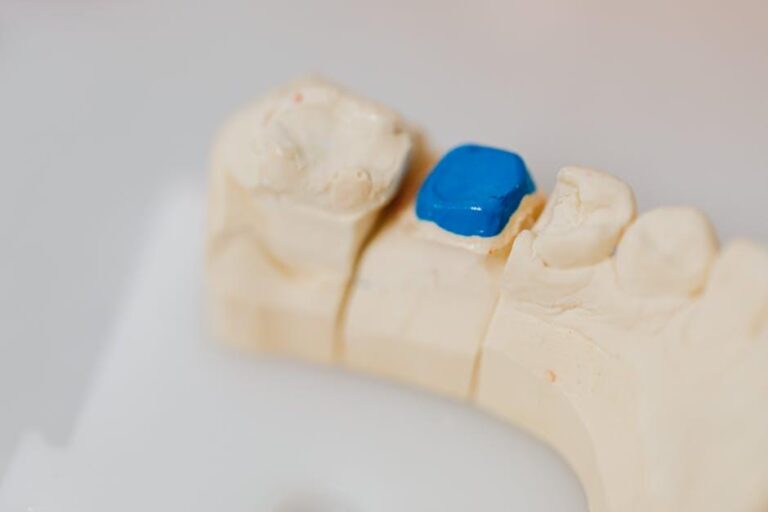
Ladapo Issues Guidance Against Using Amalgam Dental Fillings Due to Mercury Concerns – WUSF
As debates around dental health and toxic substances continue, Florida Surgeon General Dr. Joseph Ladapo has recently issued critical guidance urging the public and dental professionals to reconsider the use of amalgam dental fillings. This advisory comes amid growing concerns about the mercury content in amalgam fillings and their potential health risks.
Understanding Amalgam Dental Fillings and Mercury
Dental amalgam fillings have been widely used for decades to repair cavities and tooth decay. These fillings typically contain a mixture of metals, including silver, tin, copper, and notably, mercury. Mercury makes up about 50% of the amalgam by weight, and it provides the material’s pliability and durability.
Why Is Mercury a Concern?
Mercury is a well-known neurotoxin. Exposure to significant amounts can lead to serious health problems such as cognitive impairments, motor dysfunction, and kidney damage. Although amalgam fillings have been considered safe by some health authorities over the years, research indicates that mercury vapor released from fillings can accumulate in the body, especially with multiple or large fillings.
What Dr. Ladapo’s Guidance Means for Patients and Dentists
The Florida Surgeon General’s statement recommends dentists to avoid placing new amalgam fillings and patients to explore alternative treatment options. This advice aligns with a broader movement in healthcare prioritizing non-toxic dental materials and patient safety.
Summary of Ladapo’s Guidance
| Action | Description |
|---|---|
| Avoid New Amalgam Fillings | Dentists should consider alternative materials for newer restorations. |
| Inform Patients | Patients must be made aware of mercury risks and options. |
| Explore Alternatives | Use composite resins, ceramics, and glass ionomer cements. |
| Monitor Existing Fillings | Evaluate current amalgams and remove only if medically necessary. |
Alternative Dental Filling Materials and Their Benefits
Thankfully, modern dentistry offers several mercury-free options that provide excellent durability and aesthetics while eliminating the risk of mercury exposure.
- Composite Resin Fillings: Tooth-colored, blend naturally with teeth, and suitable for both front and back teeth.
- Ceramic Fillings: Highly durable and stain-resistant but tend to be more expensive.
- Glass Ionomer Cement: Releases fluoride which can help protect teeth from further decay.
Comparison of Dental Filling Types
| Filling Type | Durability | Aesthetics | Cost | Mercury Content |
|---|---|---|---|---|
| Amalgam | High | Silver color (less aesthetic) | Low | Contains mercury |
| Composite Resin | Moderate to High | Tooth-colored | Moderate | None |
| Ceramic | High | Excellent (matches tooth color) | High | None |
| Glass Ionomer | Low to Moderate | Off-white | Low to Moderate | None |
Benefits of Moving Away from Amalgam Fillings
Following Ladapo’s guidance can provide multiple benefits to dental patients, including:
- Reduced Mercury Exposure: Minimizing risk of mercury-related health issues.
- Improved Aesthetics: Modern materials blend seamlessly with natural teeth.
- Environmentally Friendly: Mercury disposal and contamination concerns are addressed.
- Patient Peace of Mind: Increased confidence in the safety of dental care.
Practical Tips for Patients Considering Filling Removal or Replacement
If you currently have amalgam fillings and are worried about mercury exposure, consider these recommendations:
- Consult a Trusted Dentist: Talk about your concerns and explore alternatives tailored to your dental needs.
- Evaluate the Need for Removal: Do not remove fillings unnecessarily as removal can temporarily increase mercury exposure.
- Ask About Safe Removal Techniques: Dental professionals can use methods to minimize mercury vapor release during removal.
- Maintain Good Oral Hygiene: Prevent new cavities by brushing, flossing, and regular dental visits.
Case Study: Patient Experiences Post-Amalgam Removal
Many patients report positive health and aesthetic outcomes after replacing amalgam fillings. One patient shared:
“After discussing the risks with my dentist, I decided to have a couple of my old amalgam fillings replaced with composite resin. I’m happy with how natural my teeth look now and feel relieved knowing I’m reducing my exposure to mercury.”
Conclusion: A Shift Towards Mercury-Free Dentistry
Dr. Joseph Ladapo’s guidance against the use of amalgam dental fillings shines a spotlight on a critical public health issue—the safety of mercury in dentistry. With abundant safer alternatives available today, patients and dentists alike are encouraged to consider mercury-free options.
Staying informed and proactive about your dental choices contributes not only to your individual health but also to broader environmental safety. If you have amalgam fillings, speak with your dentist about your concerns and explore effective, modern alternatives to safeguard your oral and overall well-being.
Stay tuned to WUSF for further updates and expert advice on dental health and safety practices.


